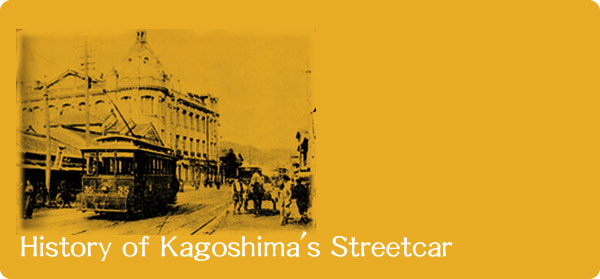
| The history of Japan's
streetcar started in Kyoto in 1895. Since then, streetcars spread
throughout Japan as an important mean of transportation compared to
the former transportation means like carriages and rickshaws during
the period from the Meiji era (1868-1911) to the Taisho era (1912-1925).
The first streetcar started service in Kagoshima in December, 1912. It was the 28th city in Japan to introduce streetcar. The first streetcar lane was 6.4km between Takenohashi bridge near Kagoshima city transportation bureau (Koutsukyoku) and Taniyama. One way fare was 2 sen (1 yen = 100 sen). It was not cheap for local people at that time, but the use of streetcars spread among people and became their new indispensable form of transportation. After some time, streetcar lanes were extended to Nishi Kagoshima station, Ishiki, Kagoshima station and route 10 (near Shiroyama). At the peak year of 1949, over 44,500,000 people used streetcar in a year (10,062,000 users, as of 2001.) Depends on the time and movement of people, street routes changed. There was time at which Kagoshima streetcars had up to 11 routes. Due to the increase of people using cars, the numbers of streetcar users have decreased year by year. In 1985, 2 main lanes to Ishiki and Shiroyama was abolished.  |
|



